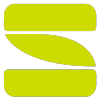April 27 marked World Design Day, but every day, we like to celebrate the graphic design process. Why? Because, like a fine wine or a good cup of coffee, great design work takes time. Instant gratification carries great weight in today’s society. You don’t have to go far to find a web service or two pumping out cheap and cheerful designs for single-digit prices. But, fast and cheap does not necessarily mean you will receive something that is unique, conceptual and evergreen. In fact, it is proven that strategic iteration is the key to perfection. Neil, our head of design, is an industry-trained professional with deep respect for and loyalty to the design process. We often get asked by clients about the process and what the benefits are versus an informal approach. To this question, we respond that unless you put rigor and structure into the design process, it’s easy to lose your way and spin your wheels in the creative soup. This is a scenario that neither client or designer want to get into. Nobody wins when the project isn’t moving forward. The design process is a gradual progression from minimum viable product to polished masterpiece. Here are the major steps along the way. The Brief It’s absolutely critical that the project kicks off with both the client and designer on the same page. Understanding the brand, target audience and overall objectives, as well as any preferences to certain designs styles, is essential to moving forward efficiently and effectively. Even with a brief, projects can go off the rails if there is a miscommunication about the direction at the early stages. Designers find it helpful when you share share moodboards and samples of what you like – after all they speak in visual language. Research As the old saying goes: design is 70% research and only 30% execution. When a designer takes the time to understand your industry, your competitors and like-minded brands, he or she will become entrenched in the project. This also helps the designer get a sense of what already exists in your space so they don’t create anything too similar. Research will likely lead to creative work that is well thought out, steeped in insight and aligned with your business goals. Mostly importantly, it will be original work. Sketching You know a true designer when you see them clutching a sketchbook and pencil. Neil has his Field Notes positioned within reach: on the bed table, in the car, at his desk, even in the shower (they’re waterproof). Sketching is a quick and efficient way to jot ideas down at scale. At first, no idea is a bad idea. This technique is all about birthing concepts and exploring various directions. And, just when we think we’ve exhausted every angle, we’ll extract a few more from the deep recesses of our minds. We’ve found that those last sketches are often some of the strongest. In the first round of feedback, you’ll receive your design options in sketch format. This is the most efficient way for us to gauge your first reactions before spending time to perfect them. If we are off base completely, we will be able to course correct without ever touching an Adobe program. Digitizing Once a client has landed on a short list of sketches, they’ll be scanned in and used as reference to create a digital version. During this phase, the concept is refined and tweaked. Neil will often duplicate the designs over and over, while he plays with colour ways, typefaces, line treatments and angles. During this process, sometimes fresh ideas may come to life. However, even though we may have dozens of variations, our clients will only see the top selects at the next round of feedback. As a final checkpoint, the logo is looked at from every possible angle to ensure that it looks good when viewed from any perspective – and to make sure no inappropriate symbols are revealed unknowingly. At this stage of the process, it will be clear whether we’re on the right track and we should be nearing a final version of the logo with only small tweaks to type, colour and line. Feedback When we’re working with clients, we see the process as very collaborative. We’re up front at the beginning about how many stages of feedback the client has, but open to refinements as we go. In return, we hope our clients provide us with clear, concise and very specific feedback. Here are some questions to help guide you on the way: Here’s a recent example of some work we did with our good friend, Ann Marie McKenzie. She’s a Desire Map workshop facilitator and was looking for a logo that reflected her own personal style and approach. As you can see, a lot can happen between the first sketch and the final product. And there you have it: a design process that is rigorous, but leaves room for course correction and iteration. It’s not as simple as opening up Adobe Illustrator and playing around for a little bit. There is much more research, concepting and evolution required behind the scenes to make beautiful design that stands the test of time. Have a design challenge for us? Get in touch and let’s chat! 



